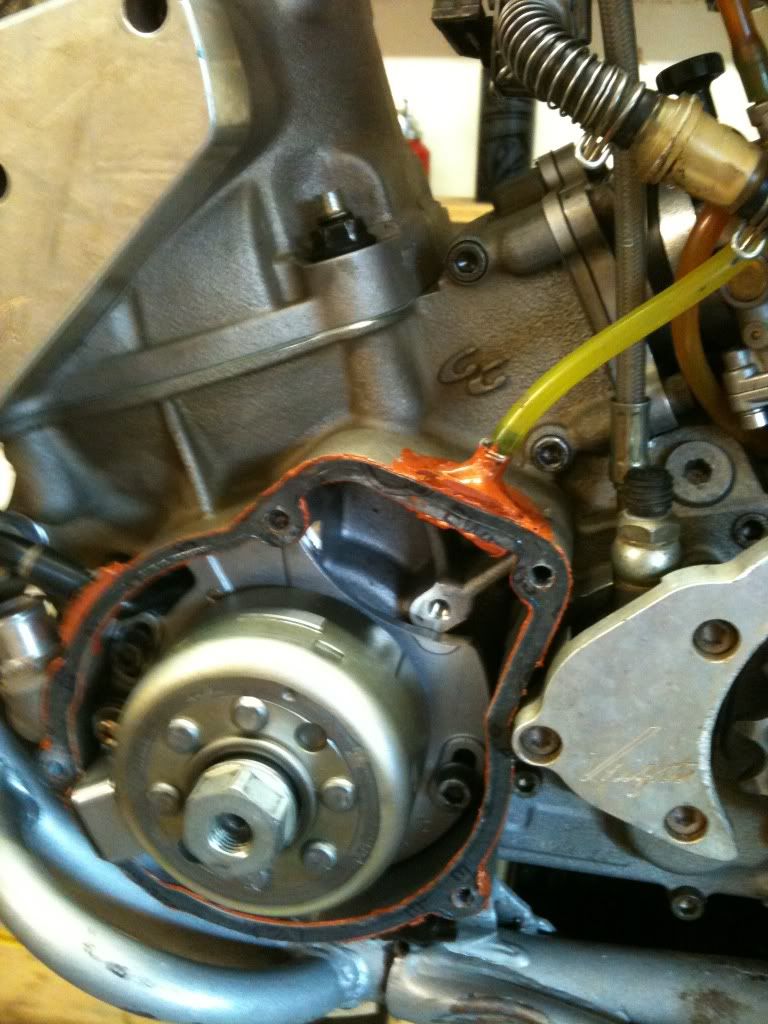Caravan Monster
New member
Purchased an '06 EC200 at the weekend. Got it home, and upon examination it became evident that the ignition side main bearing had failed  Got the engine out, stripped down and cleaned to rebuild. I've not split EC engine cases before and didn't realise that there is a drain hole from the generator housing and down through the (M6?) threaded hole in the underside of the cases.
Got the engine out, stripped down and cleaned to rebuild. I've not split EC engine cases before and didn't realise that there is a drain hole from the generator housing and down through the (M6?) threaded hole in the underside of the cases.
This set up looks like a recipe for disaster to me because it will fill up the housing with water when fording rivers and suchlike. The Gas Gas diagrams show that the drain hole is not sealed with a bolt and washer as standard. Does anyone know why this is so, and would there be any harm in blocking the hole ?
Nails to show path of the drain

Showing the river silt that wrecked the bearing seal

This set up looks like a recipe for disaster to me because it will fill up the housing with water when fording rivers and suchlike. The Gas Gas diagrams show that the drain hole is not sealed with a bolt and washer as standard. Does anyone know why this is so, and would there be any harm in blocking the hole ?
Nails to show path of the drain

Showing the river silt that wrecked the bearing seal




